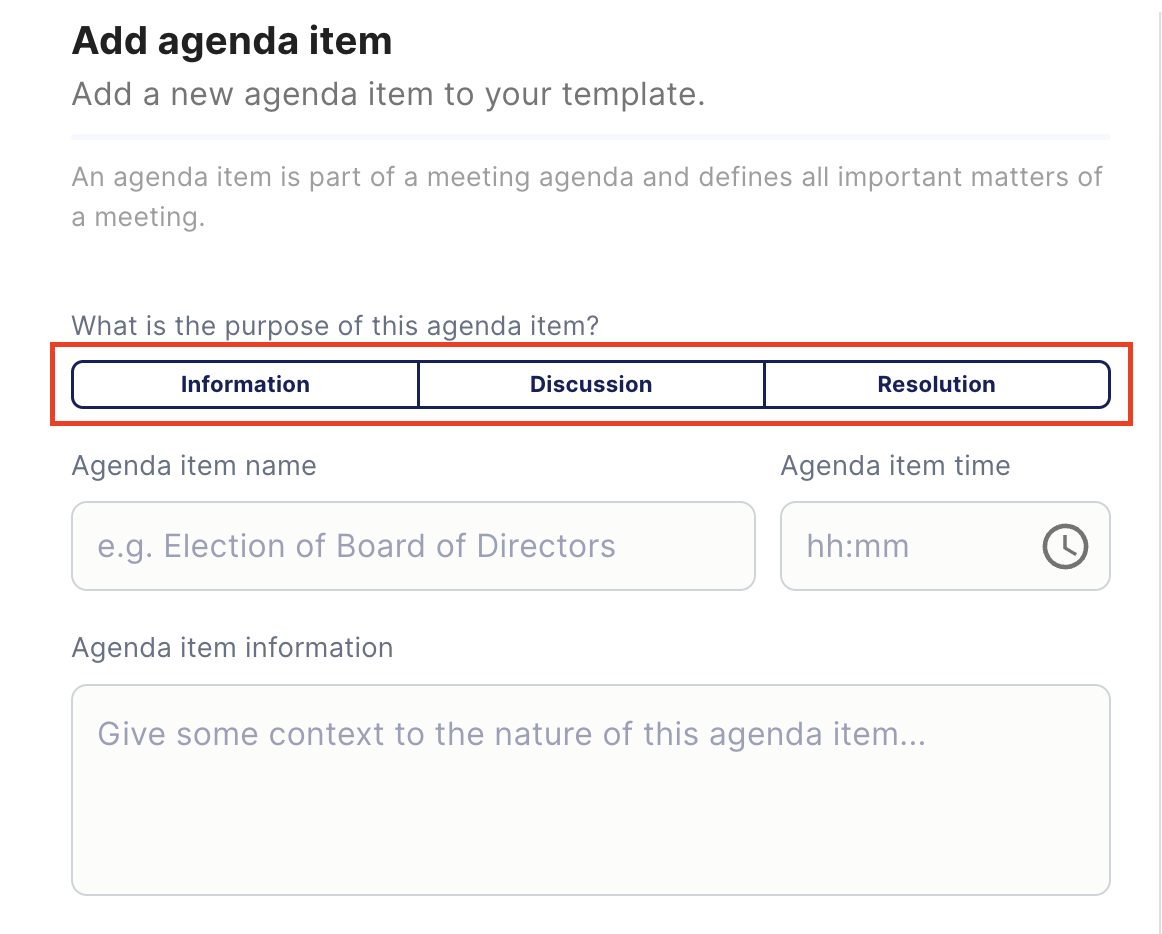What is the difference between the three agenda items: dicussion, information and resolution?
Each agenda item serves a different purpose. To help participants prepare efficiently and to ensure a productive meeting, we recommend to communicate the purpose as early as possible.
When you create the agenda you must select a purpose for each agenda item. You can choose between Information, Discussion and Resolution.

Discussion:
This agenda item is used when there is a need to have a conversation or exchange of ideas among the participants. During the discussion, attendees can express their opinions, share insights, ask questions, and engage in a collaborative dialogue regarding the topic at hand. The goal of a discussion agenda item is to foster open communication and gather input from the participants.
Information:
This agenda item is meant to provide updates, announcements, or reports to the attendees. It is typically a one-way communication where the meeting organizer or relevant individuals share important information, such as project updates, financial reports, or other relevant updates. The purpose of an information agenda item is to keep all participants informed about specific matters without necessarily seeking their input or decision-making.
Resolution:
A resolution agenda item is focused on making decisions or reaching a consensus on specific matters. During this agenda item, participants discuss options, evaluate alternatives, and ultimately make a decision or come to an agreement. Resolutions can be related to various aspects, such as approving a budget, selecting a course of action, or deciding on project milestones. The resolution agenda item ensures that important decisions are made in a structured and deliberate manner. Important: this purpose must be used if you want to conduct a former resolution with Fides (e.g. calculate the majority, use the resolution item catalogue etc.)
